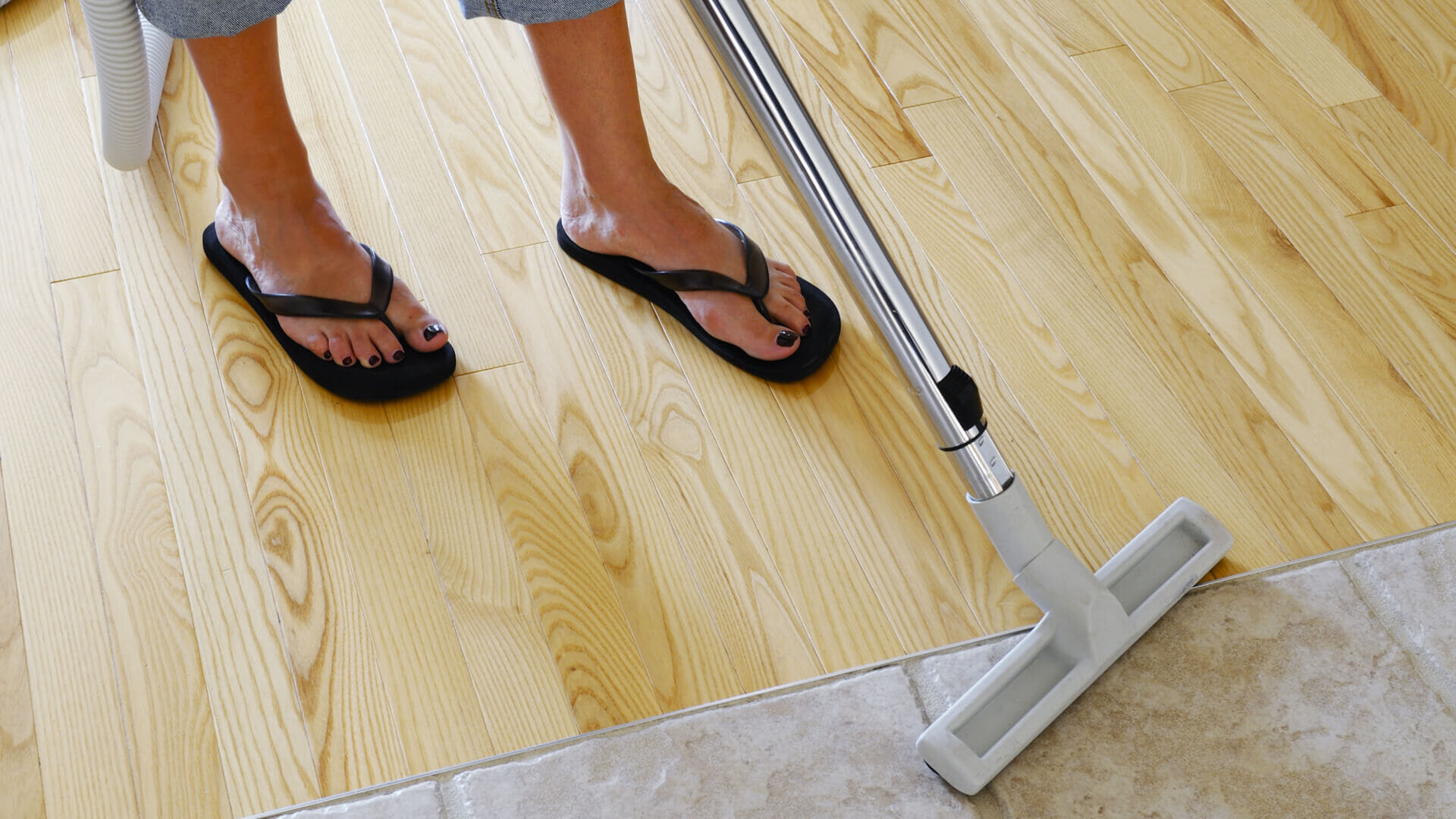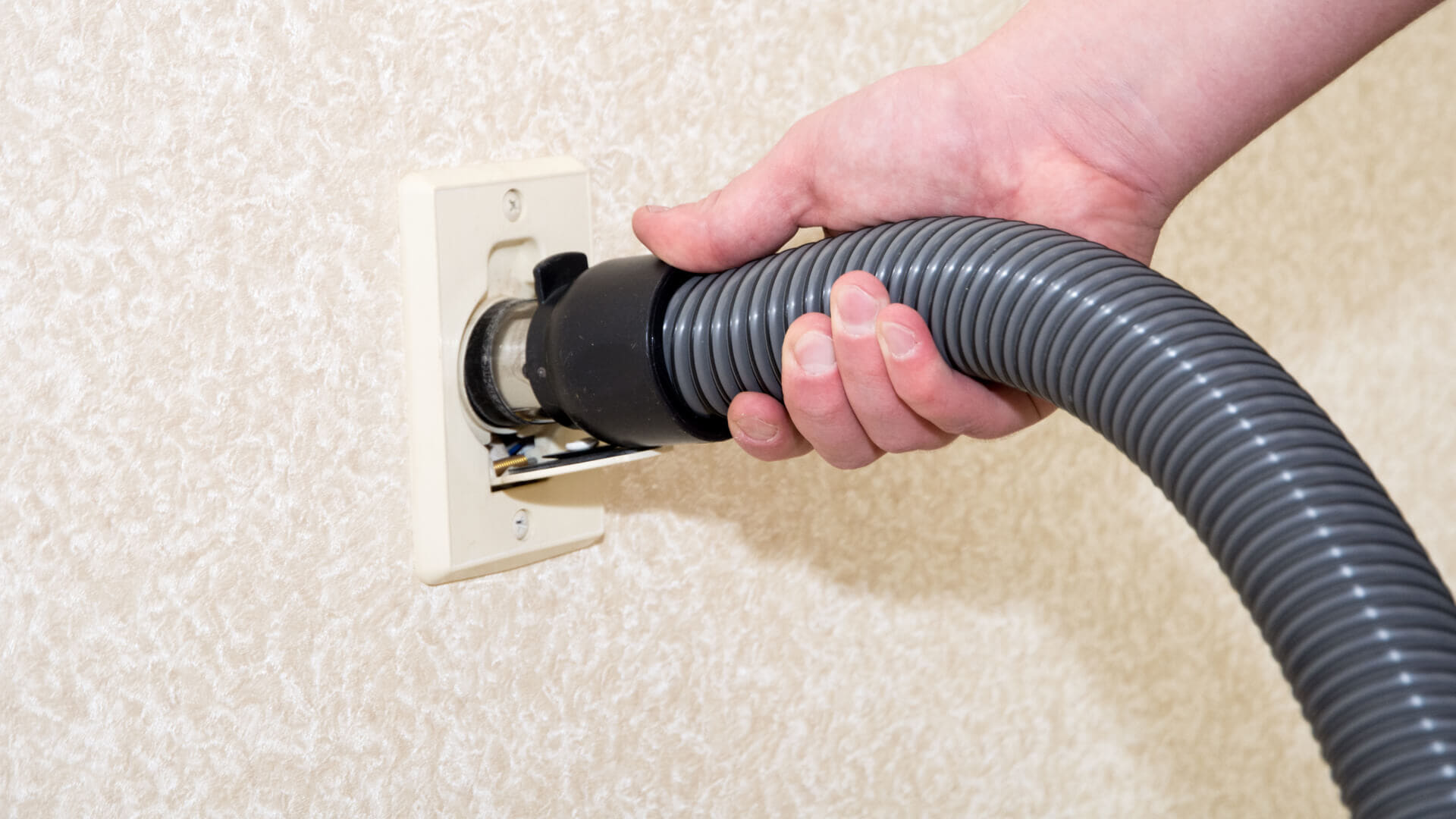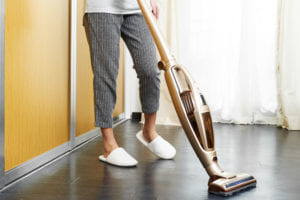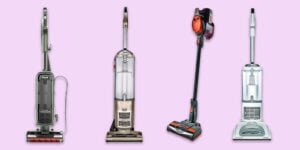Central Vacuum Guide
Does the thought of having to lug your vacuum around your home or to empty your machine’s clunky dust canister diffuse your desires to clean? If you want freedom from these potential problems, maybe it’s time you consider installing a central vacuum cleaner in your home.
This article explains how a central vacuum works and how it can simplify your home cleaning. It also offers some important considerations for those looking at central vacuum systems to ensure that the system installed meets your cleaning requirements.
How Does a Central Vacuum Cleaner Work?
A central vacuum system works by sucking dust into tubing typically hidden in walls and floors. These tubes lead to a central dust canister that is located away from the main hub of the home. Air inlet valves are usually located in the walls or floors so that when you connect the hose the system is activated. The motor that drives the system is far more powerful than a standard vacuum cleaner motor and is typically located outside or away from the center of the house. The canister where the dust collects is significantly larger, allowing for the freedom to empty it only three or four times a year.
What Are the Advantages of a Central Vacuum Cleaner System?
Installing a central vacuum cleaner system can come with numerous advantages, including:
- Quiet Operation
They are great for those who prefer a quiet vacuum cleaner. Central vacuum motors are typically located outside, making the vacuum virtually silent inside the house. All you hear is the suction sound as the dust gets sucked into the system. - Cleaner Air
With some traditional vacuum cleaners, it’s possible that dust could escape back into the atmosphere of the room via the exhaust outlet, a problem known as “blow-back.” With a central system, however, the dirt gets removed to a remotely located dust canister, so the chance of any blow-back is exceptionally remote. - Less Wear and Tear
Possibly the single most important advantage of a central vacuum system is the simple fact that a central vacuum means you no longer have to lug around a hand-held vacuum cleaner. That’s great if you want to protect walls and floors from scuffing or scratches as you carry the often heavy vacuum cleaner up the stairs. There’s also no tripping on long cords, no replacement drive belts to worry about, and no blockages to stop up your cleaning routine. - Good for Limited Mobility
Vacuum cleaners can be heavy, a factor that can pose problems especially for people who may not be as mobile as they’d like. The central vacuum cleaner system is more accessible for them because all they have to lift is the hose. And the inlet valves are located in easy to reach places, and if you live in a two-story house, there’s usually one or two on each floor. - Easy to Use
Most central vacuum systems are easy to use: just attach the hose, and the vacuum is on! You also get to choose where the inlet valves are located, so there shouldn’t be any part of the home that the hose won’t reach. - Central Dust Canister
The dust canister of a central vacuum will be installed in a dedicated space – typically the basement, or utility room – and because the canister is so large, you’ll probably only have to empty it three or four times a year. These central dust canister also help protect against the spillage of contaminants into the house as they accumulate dust and debris in a sealed container.

What Factors Should I Consider When Choosing a Central Vacuum System?
Once you’ve decided that a central vacuum is right for you, there are a number of factors that you should consider as you complete your purchase and installation. Let’s take a look at some of the most important steps here:
Decide on the Right Installer
In addition to finding the right central vacuum system for your home, you also want to find the right installer. Usually, the best option is to speak to friends and neighbors who have a system installed. Getting recommendations is always the best way to ensure quality. Sometimes referrals and recommendations from friends can also result in a better deal for you.
You might also want to consider the longevity of the company you are considering. Those companies that have been operating for many years and have excellent reviews, for example, might be a better bet than a new company or one with questionable client feedback. Pay close attention in these reviews to the warranty and service package offered by the installer so that you have a sense of service if something with your central vacuum goes wrong.
If recommendations from friends or local research doesn’t do the trick, you can always search for an installer online. The internet allows us to do more in-depth research, especially when it comes to customer satisfaction ratings, and you can also refine your searches online to ensure you are finding the best candidates in your region.

Review Your Home’s Needs
With your installer selected, you will need to schedule an appointment for them to visit your home and assess what type of system is right for you. In addition to selecting a system with the right motor, airflow, and suction efficiency, your installer will most likely also use terms like “Water-lift” and “CFM (Cubic feet (of air) per minute).” Both measurements are vital if you want a capable system, but what do they mean? Let’s take a quick look at each:
Water-lift:
To test the effective power of the vacuum suction, water is sucked into the tubing and measured how many inches up the pipes the water gets lifted. It’s the simplest way of measuring the “sealed suction” force of the motor.
CFM (Cubic Feet of Air per Minute):
This measurement tests the amount of air taken in through the hose. The larger the diameter of the hose, the greater airflow is needed. a higher CFM is crucial if you have deep pile floor coverings because it is effective at dislodging debris using the airflow and sucks it more easily into the vacuum system.
What Else Should I Keep in Mind?
The vacuum installer will assess your home and make decisions based on many factors. Let’s review some of the most important factors that you’ll probably discuss:
The Fit of the System
Unless you are building a new home or performing major renovations, your installer will need to carefully consider how to hide the necessary tubing for your central vacuum system. The location of the dust canister and the positions of the inlet valves also have to be considered. If you have a single story home, it’s likely that the pipe can be fitted under the flooring, with the inlet valves either mounted to the wall or the floor. If you have a laundry room, utility room, or basement, that’s likely the best location for the dust canister.
If the flooring is solid, then inventive methods can be employed. Hiding tubing behind cupboards and closets is typical, and routing the pipes in the attic and dropping into a room behind a cabinet is also a useful method. Regardless of scenario, the installer should be looking for the shortest distance from the motor to the dust canister to avoid loss of performance.

The Location of Inlet Valves and Hoses
Inlet valves are typically located in central points, such as hallways, in the home for ease of use. Most homes with a central vacuum system have three or four inlet valves, especially if it’s a two story house.
You also want the hose to reach all the rooms and every hard-to-reach spot, so you want to choose a length that suits the size of the home. You can also get hoses that are retractable, allowing you to extend the range when needed.
The Size of the System
It is crucial that the system is matched perfectly to the size of your home. The installer will take into consideration the square footage the house and the number of floors and rooms to ensure that the central vacuum can reach every part of your house. Your installer will also need to take into account the amount of suction needed. They type of flooring plays an important part here. If you have carpet throughout, you will need to consider the CFM to dislodge the hard to reach debris, but you need to couple that with effective water-lift performance.
System Maintenance
When comparing a central vacuum system with the cost of replacing, or repairing standard vacuums, there is no comparison. The standard hand-held cleaner is cheaper by far in the short-term. Keep in mind, though, that you’ll probably have to replace your standard vacuum cleaner approximately every three years; the central vacuum, however, only really needs replacement parts roughly every ten years. If your selected installer offers a strong service plan, a central vacuum can work like new for sometimes twenty or thirty years. This longevity makes the central system a bit more competitive in the overall cost comparison.
How Much Will a Central Vacuum System Cost?
As we’ve discussed, central vacuum systems take the hassle out of vacuuming, can boost air quality, and can provide efficient vacuuming for years provided they are well maintained, but how much does a central system cost? It’s not cheap, that’s for sure. The average cost ranges between $1000 to $3000 for a typical home approximately 2500 square feet in size. Some of the additional elements that might impact the cost of your system include:
New Construction versus Retrofitting
If you’re having a new home built, installing a central vacuum system is much cheaper than retrofitting. There isn’t the need to work around obstructions, making the system fit the house, so the shortest, most efficient operation can be planned to best utilize the efficiency and performance of the central vacuum.
Accessories
As with hand-held vacuum cleaners, central systems can be ordered with an array of accessories. You can have brush roll technology in your hose attachment; you can have stretch hoses that retract and extend with ease; and you can even have automatic dustpans fitted to the kick plates in your wall so that you can sweep dirt away with a broom.
Fast Facts: The Pros and Cons of a Central Vacuum System
Having covered these various elements of the central vacuum system, let’s recap the pros and cons:
| Pros | Cons |
|
|
Final Thoughts
Central vacuum systems can be costly and difficult to install if attempting to retrofit them into a preexisting space. For those with the budget, though, the pros of the central vacuum system can far outweigh the cons. Installing such a system means that you can say goodbye to dragging a heavy vacuum cleaner around, and the sealed suction means those with allergies or other respiratory conditions can breathe a little easier at home. So what are you waiting for?




